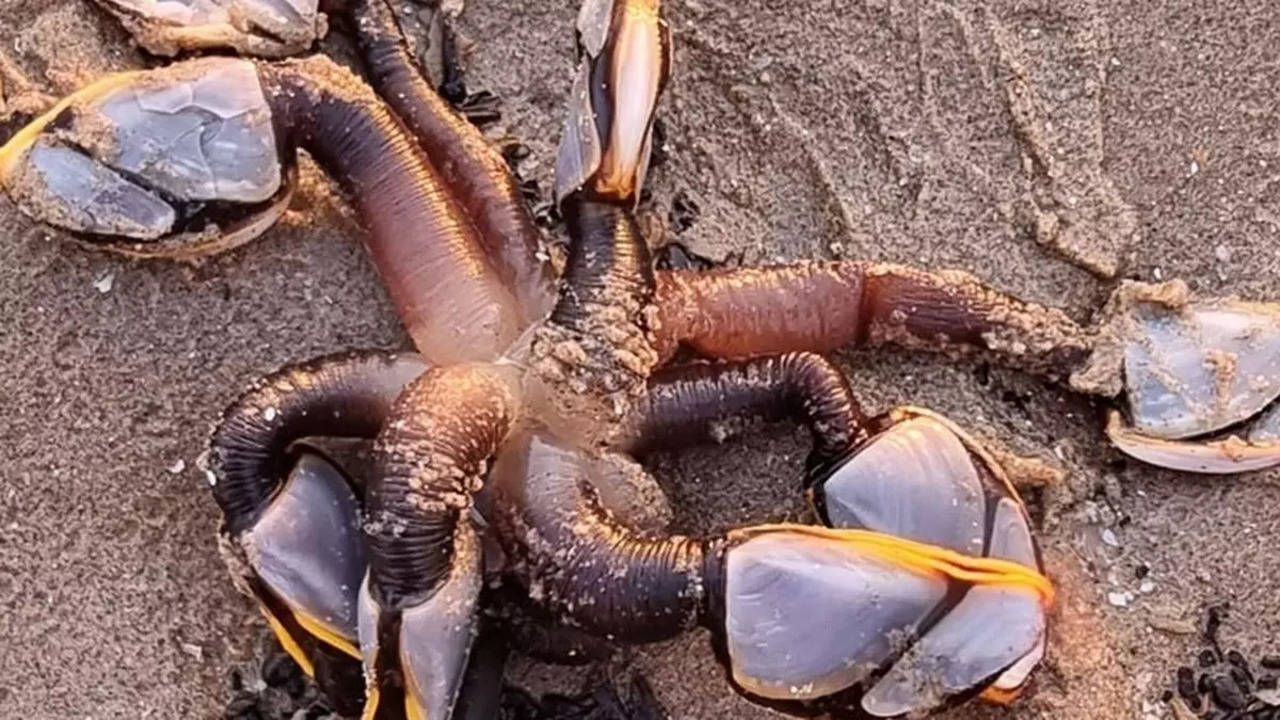This alien-looking creature is delicacy worth a fortune; a kilo can cost Rs 28k
Shell Longmore spotted the creature washed up on Bennar beach during a casual visit. After failing to identify it, she posted a photo of the sea creature with hopes of getting an answer. But netizens were as baffled as her.

Gooseneck barnacles.
KEY HIGHLIGHTS
- Many said it looked like a giant spider and the Mind Flayer from Stranger Things.
- After the photo went viral, experts were able to identify the creature as a gaggle of Gooseneck barnacles.
- Goose barnacles are considered a rare delicacy and are among the world's most expensive seafood.
From the millions of things that wash up on beaches around the world every day, only a few of them leave people stunned.
The ones that leave people baffled are rare deep-sea species that manage to find their way to shorelines.
One such creature, recently discovered in Wales' Bennar beach near Dyffryn Ardudwy, is reminding netizens of the Shadow Monster from Stranger Things.
Shell Longmore spotted the creature washed up on Bennar beach during a casual visit. After failing to identify it, she posted a photo of the sea creature with hopes of getting an answer. But netizens were as baffled as her.
“I thought I had seen all the local wildlife until I found this – it was a massive shock! It was a strange-looking creature but also very beautiful.”
Many said it looked like a giant spider and the Mind Flayer from Stranger Things.
After the photo went viral, experts were able to identify the creature as a gaggle of Gooseneck barnacles.
Goose barnacles or Gooseneck barnacles are filter-feeding crustaceans that live attached to hard surfaces of rocks and flotsam in the ocean intertidal zone. They are considered a rare delicacy and are among the world's most expensive seafood.
In Portugal and Spain, some species of goose barnacles are widely consumed as an expensive delicacy called percebes.
Export prices of up to £300 (Rs 28,000) per kilo, according to reports. They are traditionally collected from underwater rocks and crevices on Spain’s Costa da Morte.
They are very expensive because of the dangers involved in gathering them by specialist fishermen, who risk their lives by diving beneath crashing waves.
Trending:
End of Article
Subscribe to our daily Newsletter!
Related News





Watch | Retired Punjabi Couple Makes Food in Their Van's On-the-Go Kitchen; Netizens Call It ‘Goals’

Man Sends His Resume and Cover Letter Through Blinkit: 'Hustle Is Real'

Watch: Dolly Chaiwala Serves Tea To Haryana CM Nayab Singh Saini In Gurugram

Viral Video | Vodka Can Be Used To Clean Cloths: Here’s How

Einstein-Monroe Optical Illusion Determines Whether Or Not You Need Eyeglasses









